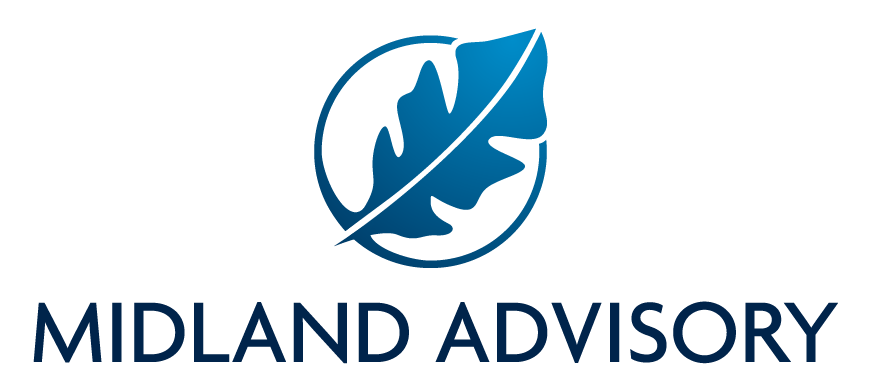Midland Advisory | Newsroom

Ways you can protect your financial information from cyber threats
A cyber attack occurs every 39 seconds, affecting one in three Americans every year, and due to the rise in cybercrime in 2021, there were nearly 850,000 reports of financial losses to the FBI Internet Crime Complaint Center. On average, individuals lose $4,476 when a breach or cyber attack occurs. Tyler Musser, Associate Vice President of IT Security, Sammons® Financial Group Member Companies, shares his insight into steering clear of common financial scams and important ways you can protect yourself against fraud and cyber threats.
How can you identify financial scams?
Phishing emails
Spoofing attacks
Vishing scams
Ways you can prevent cyber threats from accessing your financial information
- Stop and think: Many criminals try to trigger a panicked reaction by sending communications that attempt to create a sense of urgency. “If you receive a suspicious email that appears to be from someone you know, reach out to that person directly on a separate secure platform,” recommends Musser. “If the email comes from an organization but still looks ‘phishy,’ reach out to them via customer service to verify the communication.”
- Avoid hyperlinks: It’s best to avoid clicking on any hyperlinks within an email and verify its authenticity by hovering over the link to see it would lead you. “Ensure that URLs begin with “https” because the “s” indicates encryption is enabled to protect users’ information.”
- Change passwords frequently: Your best defense is a good offense, so change your passwords frequently, even if a website or service does not require it. Consider using the longest number of characters possible, while including numbers and symbols. “Get creative and customize your standard password for different sites, which can prevent cybercriminals from gaining access to these accounts and protect you in the event of a breach.
- Bump up your login protection: Multi-factor authentication (MFA) can help ensure that you are the only person that can access your account. “If MFA is an option, enable it by using a trusted mobile device, such as your smartphone, an authenticator app, or a security token. Use this for email, banking, social media, and any other service that requires logging in.”
What can you do if your financial information is compromised?
How do you know if your bank account has been hacked?
- Blocked login - If you are trying to log in and your account is locked, an unauthorized person may have been trying numerous times to access your account and password.
- Unexplained transactions - Hackers often test your account with small, less detectable withdrawals before making larger purchases.
- Unfamiliar purchases - If you spot charges or purchases that don’t ring a bell, this may be a good clue that someone has hacked your account.
- Email alerts - Be aware of any email alerts from your bank about changes to your password, email address, or alert settings that you did not authorize.
- Call from your “bank” - You may receive a call from someone posing as a bank employee who asks for your account or other personal information.
- Contact your bank: Most banks have a dedicated fraud department that will help you determine what steps to take following a breach or suspicious activity, submit a claim if needed, and give you tips that can improve security going forward. Call your bank immediately to report unauthorized charges and prevent any further transactions from occurring.
- Close your account: Depending on the severity of the breach, your bank may recommend putting a temporary freeze on your account or closing your account and opening a new one.
- Change all passwords and pins: Whether you keep your same account or open a new one, choose a fresh password that you have never used on any other site. Select a PIN that is not related to your Social Security number, birth date, or any dates tied to your spouse or children.
- Check your credit report: Oftentimes if someone has been able to access your bank information, they may open several credit cards in your name as well. Set up a fraud alert on your credit cards and review your account activity carefully in case you need to report any unauthorized activity.
Conclusion
B2-MN-10-22
Tyler Musser is an employee of Midland National® Life Insurance Company. The opinions and ideas expressed by him are his own and not necessarily those of Midland National or its affiliates. Midland National does not endorse these opinions and ideas.
REV 10/2022
| Not FDIC/NCUA Insured | Not A Deposit Of A Bank | Not Bank Guaranteed |
| May Lose Value | Not Insured By Any Federal Government Agency | |
34297YREV 1-8-26
© 2012- Midland National. All rights reserved. Midland National is a member of 
Sammons Financial® is the marketing name for Sammons® Financial Group, Inc.’s member companies, including Midland National® Life Insurance Company. Annuities and life insurance are issued by, and product guarantees are solely the responsibility of, Midland National Life Insurance Company.
